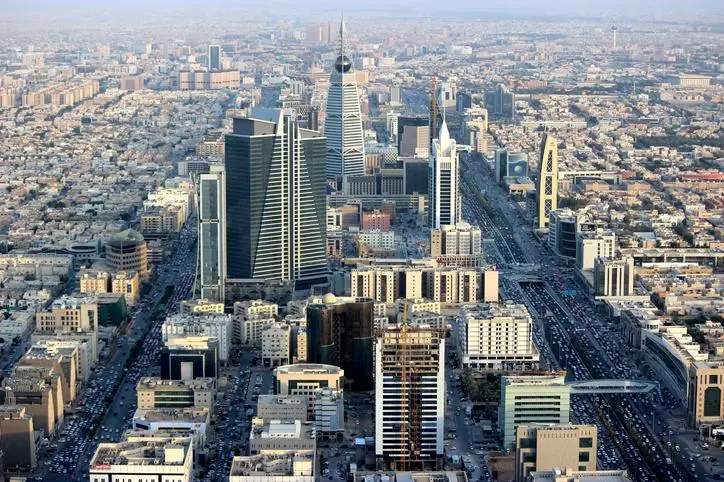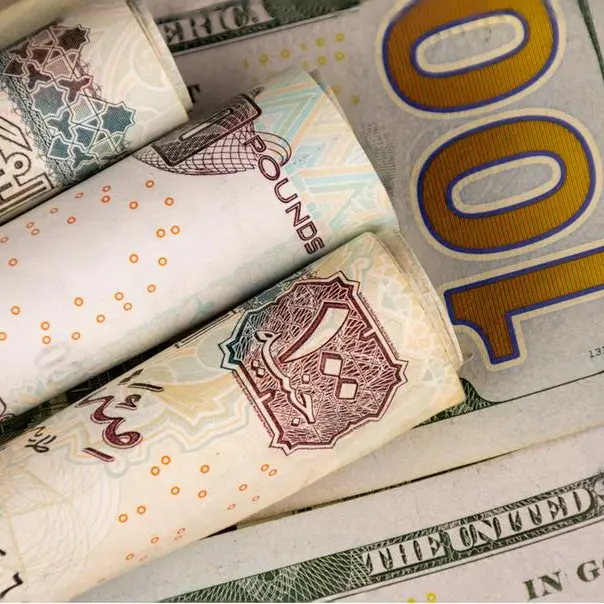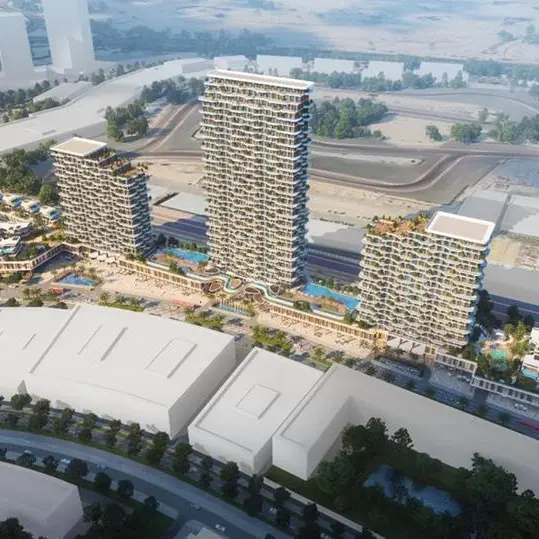PHOTO
Multibillion-dollar state support will enable Saudi Arabia’s real estate sector to escape a prolonged malaise, with the kingdom’s demographics and vast spending power likely to make it the Gulf’s No.1 property market in the long term.
The Saudi Arabia Real Estate Price Index, which is approximately weighted two-thirds to residential property and one-third to commercial, slipped to an all-time low of 80.4 in the fourth quarter of 2018, data from Trading Economics shows.
The benchmark has steadily declined since late 2014 as plunging oil prices, austerity measures and new taxes and fees sapped demand for all types of real estate. But amid the gloom, industry players report an influx of consultants, lawyers and other experts from abroad as government plans to massively increase home ownership and upgrade the country’s infrastructure accelerate.
“The demographics, plus the scale of government investment, will mean that Saudi’s real estate market will become the most dominant regionally in the medium-to-long term,” said Andrew Thomson, a partner and real estate specialist at law firm Eversheds Sutherland.
“Saudi is creating a modern housing market, imitating in a very short timeframe what has happened in other parts of the Gulf.”
The National Transformation Program (NTP), which is part of the bigger Vision 2030 plan, aims to double real estate’s contribution to 10 percent of GDP by 2020, from 5 percent in 2016. That will require Saudi to reverse declining home ownership levels among citizens, which fell from around 62 percent in 2007 to about 47 percent in 2015, according to Jadwa Investment.
A government target is to increase this to 60 percent by 2020 and 70 percent by 2030, with the housing ministry last year announcing an 18 billion riyal loan guarantee scheme, plus 12.5 billion riyals in funding to help Saudis with down payments, Bloomberg reported.
“The focus of the Gulf market in terms of major (master-planned) developments is all on Saudi and I don’t see that changing from now on,” said Thomson.
“There will still be individual developments in the likes of Abu Dhabi and Dubai, but the sector powerhouse will be Saudi for demographic and economic reasons. That will drive recruitment, logistics – companies will increasingly relocate their operations to Saudi, regional geopolitics notwithstanding.”
The Ministry of Housing’s Sakani scheme, launched in 2017, aims to deliver nearly 600,000 new housing units. Under Sakani, the housing ministry will give developers free land in order for them to build housing that is then sold to Saudis on the ministry’s housing waiting list.
“A lot of capital is saved because developers don’t have to buy or lease the land, so building affordable housing becomes more viable - without the free land, the margins would be too low,” said Fayyaz Ahmad, director of JLL Saudi Arabia, a real estate consultancy.
The housing ministry wants the kingdom’s mortgage market to be worth 502 billion riyals by 2020, Reuters reported in March 2018. At that time, the market was valued at 290 billion riyals.
To support this ambition, the maximum loan-to-value mortgage rate was raised to 90 percent from 85 percent last year, while the government provides around two-thirds of home loans.
“Any challenges in developing non-governmental housing will potentially be eased by government subsidies and grants,” said Thomson. “Over a period of time, the money will flow into the market. With the scale that the authorities are planning, it should succeed.”
Home comforts
Saudi does not need foreign investors to expand its real estate sector and as such is following a markedly different real estate model to the likes of Dubai, with the kingdom’s residential projects created more with the end user in mind, rather than investors chasing returns.
JLL conducts property valuations on behalf of banks as part of lenders’ mortgage approval process. The consultants have performed markedly more valuations this year versus the first half of 2018, an increase Ahmad attributes to the government’s house deposit loan scheme which is helping Saudis climb onto the housing ladder.
“The government has done more to support residential than other real estate sectors, so residential should rebound earlier than others,” said Ahmad.
Government initiatives to improve transparency should boost the residential sector, JLL said in a Q1 2019 report covering the Riyadh market, predicting that a housing ministry plan to launch a rental price index to better regulate the market will help increase transaction volumes.
Yet re-energising the market will take more than state reforms.
“The main hurdles aren’t governmental or regulatory but come from the banks – interest rates are rising and banks consider real estate projects to be a risky asset class, so it’s expensive for developers to find financing and their margins are contracting,” said Turki Al-Fozan, executive director and head of real estate investments at Riyadh’s MEFIC Capital.
“It’s too difficult right now to get reasonably-priced financing from the banks.”
Shrinking margins are a likely factor in developers’ increasing enthusiasm for mixed-use projects. A May report by Raza, the real estate management arm of Saudi Public Pension Agency (PPA) with 13 billion riyals of assets under management, says Saudi could follow the model of Dubai’s Downtown district or Abu Dhabi’s Yas Island to create mixed-use developments that combine residential, commercial and hospitality facilities as well as high-quality supporting infrastructure.
“Amenities such as digital connectivity, restaurants, cafes, fitness facilities, events spaces, and easy parking, all within the context of a residential and commercial hub, generate additional revenues for developers, and are exactly what the new generation of Saudi citizen wants,” the report states, predicting that as mixed-use residential developments spring up, foreign workers and their families will be less insistent on living in expat-only compounds.
Raza chief executive Waleed Alesia told Zawya that Saudis were increasingly willing to compromise on villa or apartment size in order to have more shared services available to them nearby.
“Before, it would be common to build maybe 10 standalone villas here another 15 villas there, but without a connecting community,” said Alesia. “Now, people want to live, work and entertained in almost the same connected area – that is what’s driving demand in the residential sector.”
His company is close to finishing two major mixed-use developments – Digital City phase two, which comprises around 2,230 residential units, plus Jeddah Obhur, which features about 2,500 units. Both projects will be delivered by the first quarter of 2020.
Mixed views
Yet the promotion of mixed-use developments, which generate higher returns than building villas, may be more due to developer considerations than those of the end user.
“We’ve yet to see many Gulf nationals move to these types of properties – it has predominantly been expats who live there,” said Eversheds Sutherland’s Thomson. “Depending on social changes, that could evolve in the future, but it seems like developers may be trying to create a market that may not be there.”
In Riyadh, sales prices for villas and apartments fell 2 percent and 5 percent respectively in the first quarter versus a year earlier, JLL estimates. Rents slipped 2-3 percent.
Yet on a quarterly basis, declines were negligible, and JLL forecasts flat prices and rent values over the coming year, even as the capital’s housing stock is swelled by a further 52,000 new units by the end of 2020.
“We’re close to the bottom,” added Raza’s Alesia. “The population is growing. We see foreign investment via REITs and institutions in Saudi real estate, as well as by GCC nationals, while Gulf developers are also active here.”
In commercial property, increasing capacity will likely cause vacancy rates to rise further, JLL warns. One-tenth of Riyadh office space was vacant in the first quarter of 2019, while rents fell 4 percent over the same period and JLL forecasts rental values will drop over the coming 12 months. Commercial property in Jeddah has seen bigger declines in both occupancy and rents.
“The big question marks are over commercial property, which hasn’t performed well for the past two years and is unlikely to improve for the next two years at least,” added MEFIC Capital’s Al Fozan.
“All the blue-chip projects are doing well, but 70-80 percent of commercial projects are struggling in terms of occupancy rates and rental values. Many have renegotiated their rental prices with existing tenants to support occupancy levels.”
(Reporting by Matt Smith; Editing by Michael Fahy)
Our Standards: The Thomson Reuters Trust Principles
Disclaimer: This article is provided for informational purposes only. The content does not provide tax, legal or investment advice or opinion regarding the suitability, value or profitability of any particular security, portfolio or investment strategy. Read our full disclaimer policy here.
© ZAWYA 2019






















